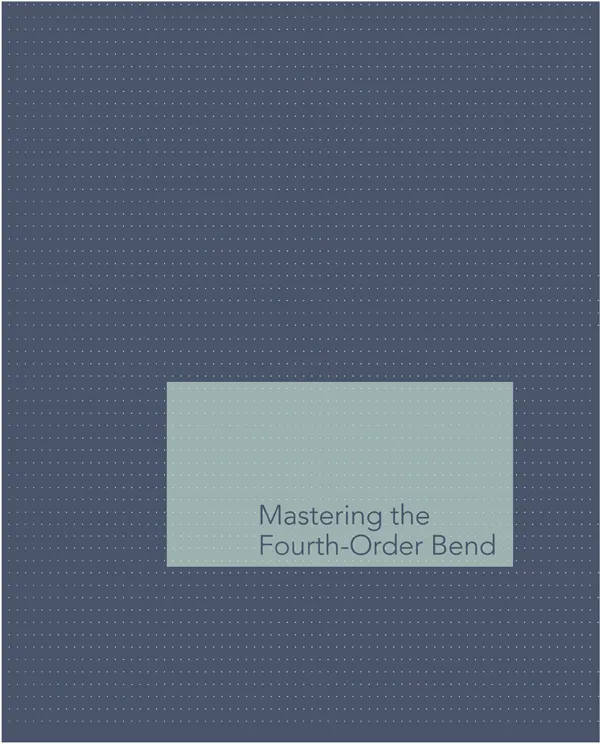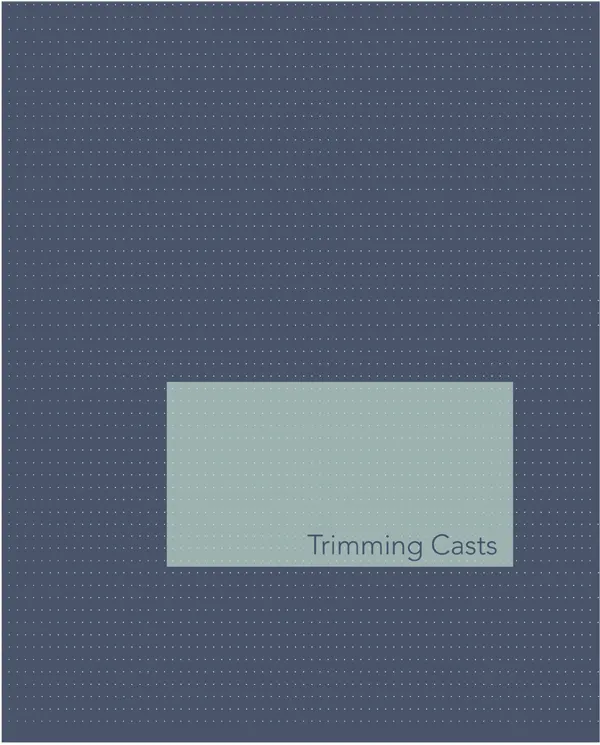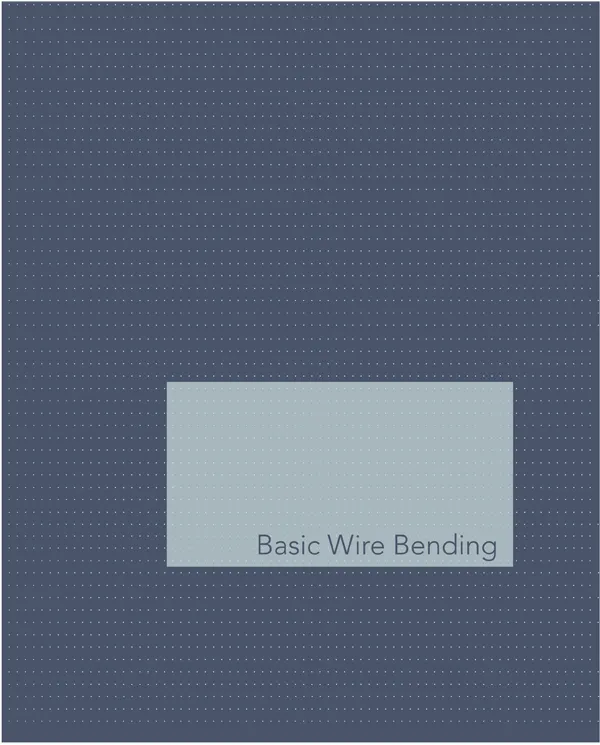
eBook - ePub
Manual of Wire Bending Techniques
Eiichiro Nakajima
This is a test
Buch teilen
- 96 Seiten
- English
- ePUB (handyfreundlich)
- Über iOS und Android verfügbar
eBook - ePub
Manual of Wire Bending Techniques
Eiichiro Nakajima
Angaben zum Buch
Buchvorschau
Inhaltsverzeichnis
Quellenangaben
Über dieses Buch
Effective wire bending techniques that are customized to each individual patient make orthodontic treatment more efficient and can reduce treatment time. the author of this manual promotes precise, intuitive bending and presents the essential componoents and techniques of customized wire bending step-by-step, including trimming of casts; selection and proper manipulation of pliers; the first-order bends (in or out), second-order bends (up or down), and third-order bends (torque); and optimal methods of adjustment to be used during orthodontic treatment. Technical images and case presentations illustrate each step of the process to ensure maximum comprehension. A must-have guide for orthodontic residents and practitioners alike.
Häufig gestellte Fragen
Wie kann ich mein Abo kündigen?
Gehe einfach zum Kontobereich in den Einstellungen und klicke auf „Abo kündigen“ – ganz einfach. Nachdem du gekündigt hast, bleibt deine Mitgliedschaft für den verbleibenden Abozeitraum, den du bereits bezahlt hast, aktiv. Mehr Informationen hier.
(Wie) Kann ich Bücher herunterladen?
Derzeit stehen all unsere auf Mobilgeräte reagierenden ePub-Bücher zum Download über die App zur Verfügung. Die meisten unserer PDFs stehen ebenfalls zum Download bereit; wir arbeiten daran, auch die übrigen PDFs zum Download anzubieten, bei denen dies aktuell noch nicht möglich ist. Weitere Informationen hier.
Welcher Unterschied besteht bei den Preisen zwischen den Aboplänen?
Mit beiden Aboplänen erhältst du vollen Zugang zur Bibliothek und allen Funktionen von Perlego. Die einzigen Unterschiede bestehen im Preis und dem Abozeitraum: Mit dem Jahresabo sparst du auf 12 Monate gerechnet im Vergleich zum Monatsabo rund 30 %.
Was ist Perlego?
Wir sind ein Online-Abodienst für Lehrbücher, bei dem du für weniger als den Preis eines einzelnen Buches pro Monat Zugang zu einer ganzen Online-Bibliothek erhältst. Mit über 1 Million Büchern zu über 1.000 verschiedenen Themen haben wir bestimmt alles, was du brauchst! Weitere Informationen hier.
Unterstützt Perlego Text-zu-Sprache?
Achte auf das Symbol zum Vorlesen in deinem nächsten Buch, um zu sehen, ob du es dir auch anhören kannst. Bei diesem Tool wird dir Text laut vorgelesen, wobei der Text beim Vorlesen auch grafisch hervorgehoben wird. Du kannst das Vorlesen jederzeit anhalten, beschleunigen und verlangsamen. Weitere Informationen hier.
Ist Manual of Wire Bending Techniques als Online-PDF/ePub verfügbar?
Ja, du hast Zugang zu Manual of Wire Bending Techniques von Eiichiro Nakajima im PDF- und/oder ePub-Format sowie zu anderen beliebten Büchern aus Medicine & Dentistry. Aus unserem Katalog stehen dir über 1 Million Bücher zur Verfügung.
Information

To say that success in orthodontic treatment is not dependent on individual wire bending techniques would undoubtedly draw criticism. Not only in orthodontics but also in any field that requires the use of specific techniques, such as implant dentistry, periodontal surgery, and oral surgery, the mastering of techniques themselves tends to be seen as the final goal. However, such techniques are meaningless without an understanding of to what and where they lead.
Orthodontic textbooks contain descriptions of first-, second-, and third-order bends. The first-order bend is in or out, the second-order bend is up or down, and the third-order bend is torque. These bends essentially relate to adapting wire on plaster casts. Casts are obtained by reproducing the very limited information provided by the teeth, gingiva, and palate at the time of impression taking. Casts do not contain information about the alveolar bone, periodontal membrane, gingiva, lingual frenum and corpuscles, or tongue. Wire bending based on limited information produces only correspondingly limited results.
Wire is used to apply force to a living organism. The teeth and dental arches are components of living organisms (ie, patients) and are part of the oral cavity, not lifeless objects separated from the individual.
Since the subjects of wire bending are living organisms, changes in these individuals cannot be discussed without reference to time. Time represents life stages from conception through birth, growth and development, and aging to death in each individual. Moreover, these individuals can live only in the environment of Earth. Humans developed the ability to walk on two legs as they evolved. The critical problem of how to balance the body in an upright position in the face of gravity had to be solved, and the morphology and function of various organs in the oral cavity evolved during this process. How can there be any meaning in aligning teeth and dental arches without considering this evolutionary process?
The fourth-order bend, therefore, is incorporating all the above-described factors into wire as information. Of course, it is impossible to incorporate all information into only one wire. One of the important purposes of clinical dentistry is to send signals to the brain via sensory organs distributed throughout the entire body, elicit appropriate orders from the brain to the muscles, and induce necessary and adequate muscle function. The fourth-order bend is a tool to achieve this. Thus, the fourth-order bend is information, rather than a method of bending.

To appropriately position teeth in the jaws and improve masticatory function and esthetic appearance, three-dimensional custom casts trimmed according to the line of occlusion are necessary. When custom-made shoes are fabricated, wooden lasts (ie, three-dimensional casts of the feet) are made by hand or using a computer-aided design (CAD) system. Without these lasts, shoes perfectly fitting the feet of individuals cannot be made. Similarly, to create arches fitting the oral environment of individuals, custom casts are necessary (Fig 2-1). Of course, this process is easy using a CAD system, but the cast fabrication method described here is a less expensive method that can be readily performed by anyone.
Casts of arches with malocclusion are not simply cut with a trimmer. Each tooth is placed along its tooth axis, and the cast is cut along a plane that connects the mesial and distal contact points and is perpendicular to the tooth axis (Fig 2-2). A more accurate mesiodistal dimension can be obtained by measuring the mesial and distal contact points reproduced on this plane. In addition, the buccolingual dimension can be obtained by measuring the maximum protrusion areas on the buccal and lingual sides of each tooth, and the size of the offset or bayonet bend that should be given to the wire can also be estimated. If custom-made brackets could be obtained, brackets with in/out appropriate for each patient would be possible based on these values. At present, such brackets cannot be obtained, and the same brackets must be used even in the presence of marked differences in tooth width. These differences can be accommodated by bending the wire.

Fig 2-1 Custom casts trimmed at the contact points.

Fig 2-2 Plans for trimming a custom cast at the contact points.

Selection of Pliers
In The Book of Five Rings, Miyamoto Musashi said that the highest attainment of the carpenter is that “his work is not warped,” “the joints are not misaligned,” and “the work is truly planed so that it meets well and is not merely finished in sections.” To accomplish these goals, tools with various purposes have been developed. Musashi says that work that can survive over time is created by using these tools perfectly. It is ideal but impracticable to create tools suitable for each carpenter; therefore, to do good work, carpenters should put forth great effort to find the tools most suitable for them. The same is true with orthod...